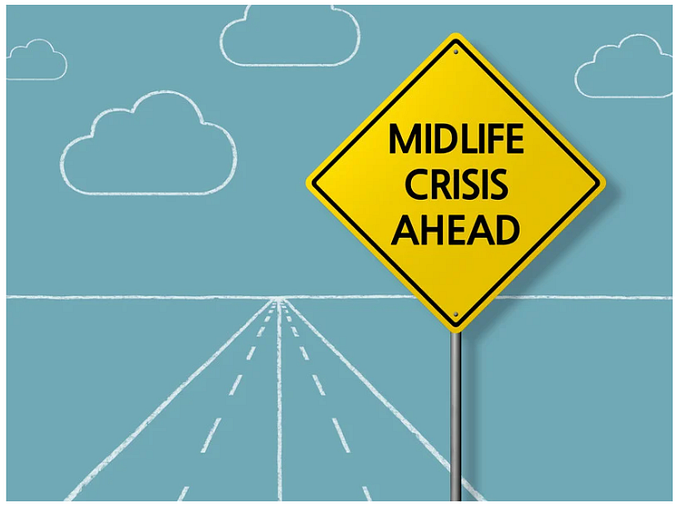
Where do our preferences come from?
We often assume “preference” as a consequence of consolidated decisions. However, recent research indicates a very different scenario: actions, context and a series of events not necessarily related to the choice itself not only influence our preferences, but contribute to create them.
The subject has been addressed by several authors, Economists and Psychologists since at least the 1950s. In the second half of the 1970s, though, a novel approach came up, highlighting the role of so-called “situational factors.”
This new perspective replaced the idea that reason alone is enough to define our choices, demonstrating that the way an information is presented can change our preferences — even in inconsistent or contradictory ways, as we will see below.
Utility, reason, and choices
Economics uses a concept called “utility” to indicate how much a choice is desirable. Assuming a basket of three distinct products — peach, mango, and kiwi, for example — my favorite fruit (the peach) is the one with the highest utility, whereas the fruit I detest (the kiwi), has the smallest.

Utility is a subjective feature; therefore, the same basket of products can be evaluated in diverse ways by different people.
According to neoclassical theory, the utility represented by a preference aims to maximize the benefit among all available options — a predominant feature of the famous homo economicus. In the context of preferences, this idea remains indifferent to exogenous factors, (erroneously) attributing our choices to a utility that has already been created and defined in memory.
Research in Behavioral Science, however, has demonstrated many factors, either conscious or unconscious, that influence decisions. Thus, actions (i.e., how behaviors are manifested) are not a mere consequence, but the very cause of many of our preferences.
Does that sound contradictory?
In their research, Dan Ariely and Michael Norton [1] identified several cases in which this point can be observed, and designed interesting experiments to test it:
- Several people were given different amounts to perform a tedious task, and then lie that they found joy in doing it. Results showed that participants who earned less money to lie, infered additional utility from the task even though its origin cannot be related to the task itself.
There is a symbolic example in world literature about it, more specifically in Mark Twain’s “Tom Sawyer:”
Tom has to paint the fence of his aunt’s house, but fears being mocked by his friends. As they approach, however, Tom wields the brush with taste, turning this trivial and tedious activity into something unique — as if he were even happy to execute it. After a fun dialogue, Tom not only gets his friends to pay him to take turns painting, but also makes them all feel real pleasure in the task.
- In another experiment, participants were asked if they would be willing to pay a certain amount — arbitrarily set based on the last two digits of their pension number — for a few bottles of wine, and then join an auction. Those whose final digits were higher also assigned a higher value to the bottles.
- Recent studies found that weather, which is something completely unrelated to the university enrollment process, did influence students’ willigness to participate: those who visited the campus on a rainy day enrolled in fewer numbers when compared to those who visited it on a sunny day.
From this perspective, and as some Behavioral Scientists argue,[2]
(…) it is possible that we do not have a set of preferences already formulated, but we rather create them at the time of decision-making.
Behavior, then, is not a linear consequence of preference, but a result of multiple factors, such as inferred preferences, memory, context, emotions, and characteristics of the environment, that altogether determine how behavior manifests.
According to Slovic (1995, p.6):
“(…) our decisions are not picked from a list, but rather built at the moment through an adaptive process.”
Further distortions
Ariely & Norton (2008) observed that past decisions influence the choices we make in the present, even when there is no relevant aspect to be considered.
This happens due to a (supposed) sense of consistency that leads us to base our choices in random factors.
Moreover, and as postulated by Slovic (1995), maximizing utility is no longer considered a crucial factor in the decision-making process. Thus, it would be more correct to describe decision-making as “a process of limited rationality” (Simon, 1956), that is, individuals who seek to obtain a satisfactory result for themselves, their desires, and goals, but not necessarily the best one.
Under these conditions, preferences are sensitive to the way questions and options are presented, and therefore built at the very moment a behavior or choice takes place.
Some experts have raised important questions about the fact that preferences can be manipulated: since they are made along and by the information process, framing options, and behavioral responses, the responsibility of social agents — such as governments, doctors, and finance professionals, for example — , is much bigger, once they can deliberatlely limit our freedom in decision-making contexts by simply changing the way choices are presented.
This argument is valid, and there are no simple answers to it right now. Richard Thaler, Nobel Laureate in Economics in 2017 and author of the “Nudge Theory”, proposes (1985) that framing effects be disclosed, so people can understand hidden aspects regarding their choices — and become aware on how improve the decision-making as a whole.
Finally, it is normal for us to look for reasons (internal, social, moral, etc.) that justify our choices. But we must be attentive to how creating such reasons shape the decision-making itself. While it is virtually impossible to escape from all behavioral biases and inconsistencies that our brain puts us into, knowing them is already a major step toward preferences that are most beneficial to us.
References
Ariely, D.; Lowenstein, G.; Prelec, D. (2006). Tom Sawyer and the construction of value. Journal of Economic Behavior and Organization, vol. 60, pp 1–10.
Ariely, D.; Norton, M. (2008). How actions create — not just reveal — preferences. Trends in Cognitive Sciences, vol. 12, no. 1.
Dos Santos, T. R. (2020). Me dá uma mãozinha aí? Nudge e como eles têm sido usados para facilitar decisões. [This piece will soon be available in English, and updated here.]
Dos Santos, T. R. (2020). O contexto importa: como a Economia se tornou Comportamental. [This piece will soon be available in English, and updated here.]
Kahneman, D.; Wakker, P. P.; Sarin, R. (1997). Back to Bentham? Explorations of experienced utility. The Quarterly Journal of Economics, vol. 112, no. 2, MIT Press.
Shafir, E.; Simonson, I.; Tversky, A. (1993). Reason-based choice.
Simon, H. (1956). Rational choice and the structure of the environment. Psychological Review, 63, pp 129–138.
Slovic, P. (1995). The construction of preference. American Psychologist, vol. 50, no. 5, pp 364–371.
Snell, J.; Gibbs, B. J. (1995). Do consumers know what they will like? Advances in Consumer Research, vol. 22, UT, pp 277–279.
Thaler, R.; Sunstein, C. (2009). Nudge — improving decisions on health, wealth and happiness. Penguin Books.
Thaler, R. (1985). Mental accounting and consumer choice. Marketing Science, vol. 4, no. 3, pp 199–214.
Notes
[1] Further details from the experiments can be found in Ariely, & Norton (2008).
[2] See Kahneman, Payne, Shafir and Slovic references.


![40 sinais de futuro [posts de 01 a 10]](https://miro.medium.com/v2/resize:fit:679/1*A_yTtc8vHqDDTKMgbg1Axw.jpeg)






